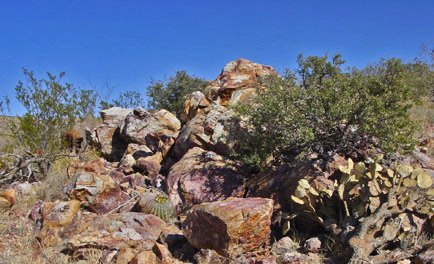|
A Sterling Silver Cabochon Pendant Its Making From Start to Finish By Mike Streeter Like most people, I spent most of my life unaware of all that is required to create a piece of fine jewelry. But after teaching myself the arts of lapidary and silversmithing, I became keenly aware of the great amount of time, expense, effort and specialized skills required to create my own sterling silver and copper cabochon pendants. In an effort to educate those who may wonder about and balk at the seemingly high asking price of any given piece of jewelry, what follows is a demonstration of the enormous amount of steps required to create a one-of-a-kind sterling silver cabochon pendant from a self-collected rock. As an example especially for this report, I created the following pendant from a rock Chrissy and I collected on a 2011 rockhounding trip to New Mexico.
The pendant looks simple enough - just slap a couple pieces of rock and silver together and whammo, you've got a pendant, right? Well, not so much and as you'll see, its creation involved dozens of steps, starting with finding and then collecting the rock from which its cabochon was derived.
Step 1 - Preparation & Travel
Any of our rockhounding trips involves putting together and loading all the clothes, tools, food and other assorted items we may need or want. We employ a pretty big pickup truck and folding travel trailer to haul our stuff and have a home away from home while on the road.
Step 2 - Rockhounding
Click here to go to the next page . . .
 |
















